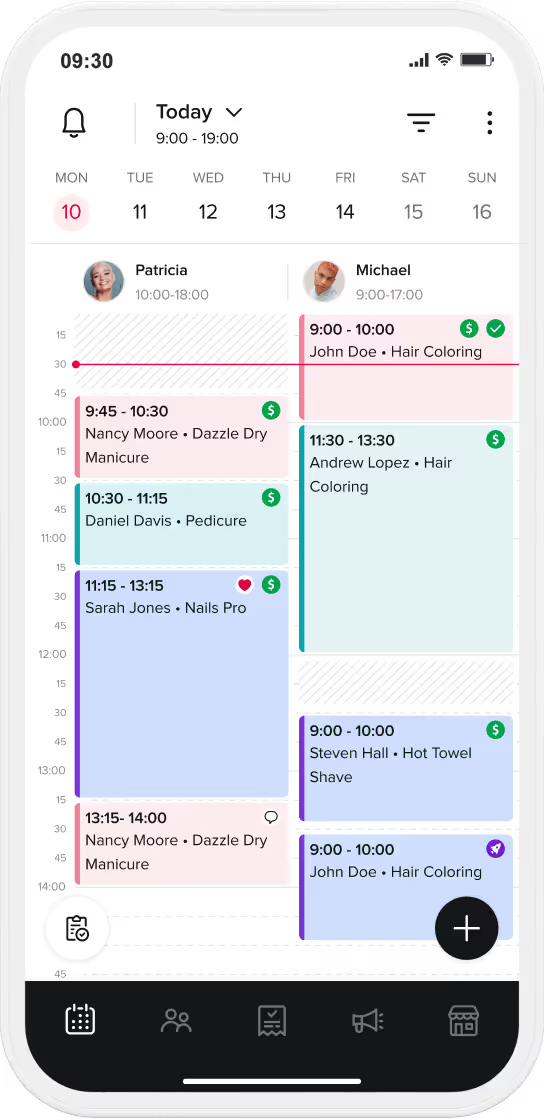

Warren Buffett once famously said,
“It takes 20 years to build a reputation and five minutes to ruin it. If you think about that, you’ll do things differently.”
This couldn’t be more true for online reviews or reputation. Negative reviews can break a small business, especially in a matter of hours. And here’s proof:
82 percent of clients won’t use a business after seeing them.
Now that we’re thinking about negative reviews and its impact on your reputation, it’s time to think what you as a local small business owner in hair, beauty or wellness, can do differently?
What steps can you take to improve and preserve your reputation?
Here’s your answer: You begin with an online review management checklist.
This starting point in online reputation management will help you improve and maintain your positive image in the community and with your clients. And we are here to help you each step of the way.
A survey conducted by Business insider states that only 37 percent of businesses always respond to online reviews. Even though most of them consider online reviews to be important for success, only about a third are actually committed to managing them properly.
What’s astonishing is that many small businesses like spas, salons or barbershops follow a very basic online review management strategy. Essentially, they try to respond to some reviews and maybe send an occasional review request to clients via an email.
This approach needs to change if you hold your reputation dearly.
How does a review management checklist fit into the picture?
It gives a small business a roadmap and a strategy to:
Having and implementing this checklist will be a huge step in building your company’s brand, be it a small barbershop, salon, spa or wellness business.
Without further ado, let’s go over each point.
Here are six things you need to do to own your business’s online reputation.
The first step to managing the reputation of your small business is to find out where you stand. How do clients perceive your local business?
Here’s how to do it:
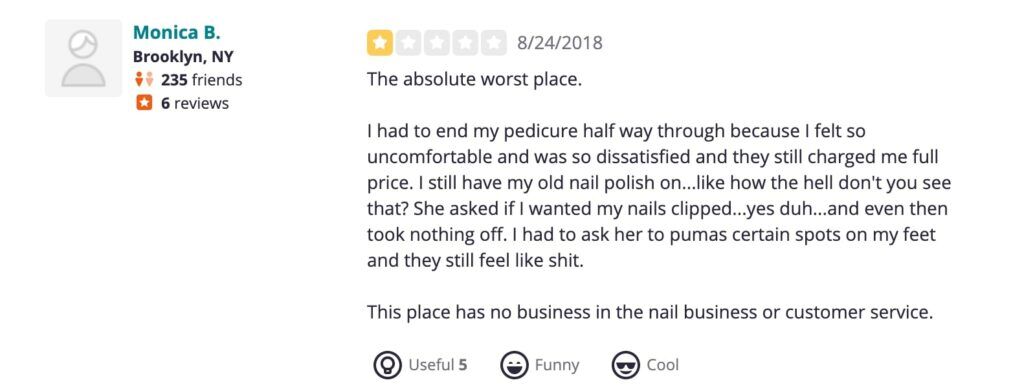
These steps should give you an idea of how your business is perceived by your clients. It’s important to repeat this audit every 2-3 weeks to address any problems.
The most important bit? You need to take care of them asap before they hinder your business development strategy. No questions asked.
Here’s how to handle it properly.
Negative reviews are common reputation issues.
The worst thing for a local business owner like you, is to ignore them.
Here’s why – for clients, a lack of response to complaints means that you don’t really care about them and no one wants to deal with a local business that ignores its clients.
That’s why the next point on this checklist is to develop guidelines for responding to negative reviews. These guidelines will also ensure that you respond and handle negative reviews respectfully and professionally.
Keep your answers consistent—language and tone-wise.
To ensure that your replies aren’t driven by emotions, you need to have those guidelines, as well as a few response templates readily available.
The guidelines should instruct your employees to:
“Hello Mark, thank you for your review.
We’re sorry to hear about your bad experience. We regret that we weren’t able to match the quality level you expected.
Can we talk about this situation and try to resolve it as soon as possible? Feel free to message our client service team lead Darren at [email address] so we could learn more about what happened.”
“Hello, Mark. I appreciate you taking the time to bring this to our attention.
On behalf of our entire team, I apologize for this bad experience and that we couldn’t match your expectations. We’d love to have an opportunity to make it right for you. Please reach out to us at [email or phone number] so we could investigate this issue and serve you better next time.
Also, please accept this [incentive] as a token of our apologies. If there’s anything else we can do, please let us know.”
Share the guidelines and examples with your employees via Google Docs or other team collaboration software you might be using. They will turn to them if someone writes a negative review of your business.
Important! It’s never a good idea to copy/paste response templates as they are. It’s very easy for many people to tell if you’re using a pre-written reply, so make sure that you personalize them.
Google My Business profile is a must-have for local businesses. It’s a source of information for clients, but for you, it’s also a great reputation management tool.
That’s why it’s so important to read and respond to reviews there. Like the team at Manly & Sons—a Genbook customer does often:
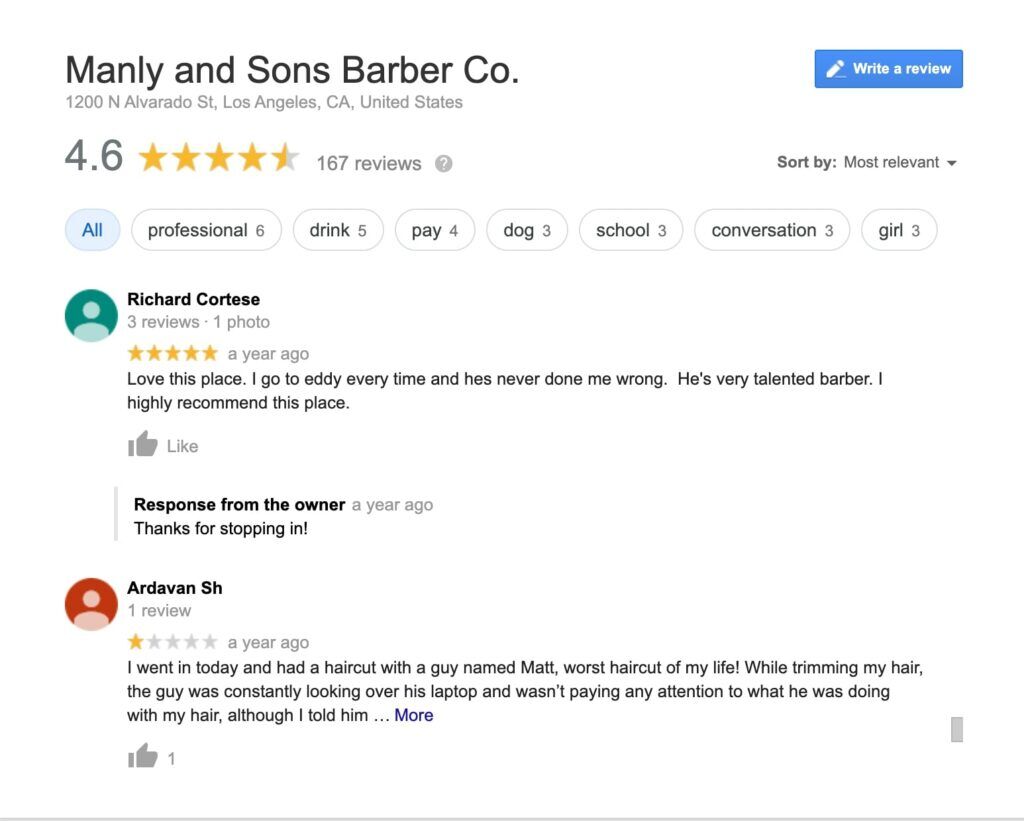
Important! Your Google My Business page needs to be optimized (completed with relevant business data, etc.) to attract potential clients. Read the guide below to know how to handle the optimization properly.
Related: How to Optimize Google My Business to Win New Clients [Step-by-Step Guide]
Instead of waiting for the clients to write positive reviews, your local business should have a means of getting more of them.
These are a few great ways to go about it:
Read more: How to Encourage Your Clients to Write Reviews
Now that you’re all set up to get more positive reviews, it’s time to harness the power of a positive reputation. Those great reviews can do wonderful things for sales so you need to showcase them.
Your booking page is a perfect place to display them. With so many clients trusting reviews, showing them there could deliver that much-needed encouragement to book a service with you.
Here’s an example of a review on the booking page of OrganicTan —a tanning salon in Winnipeg. Look how Genbook allows small businesses to feature the top review.

The next in line is your website.
But where exactly should you put them?
Start with your home page or a relevant landing page.
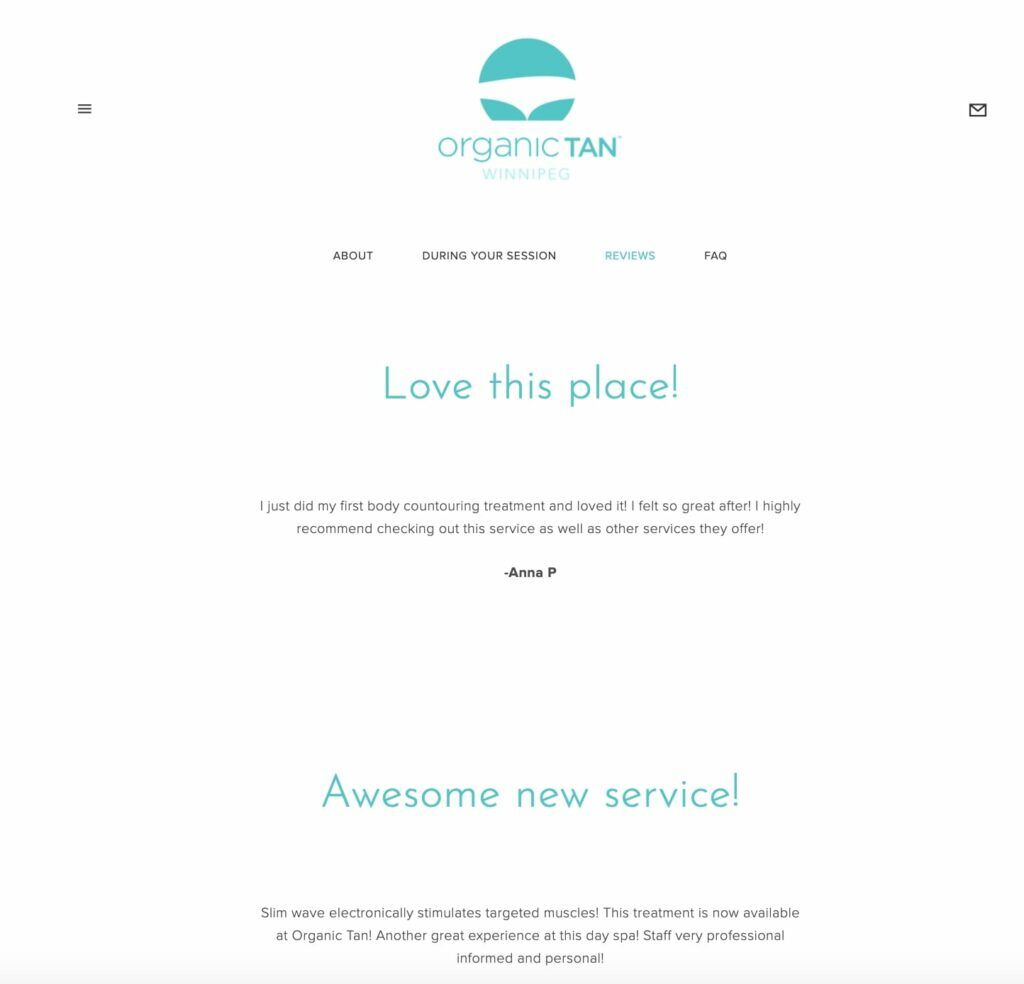
To maximize the exposure of clients to your reviews, use small non-obstructive review website banners.
They can pop up on various pages on your website – the home page and landing pages are must-dos – and it showcases the great experiences of your clients.
Here’s how they look.
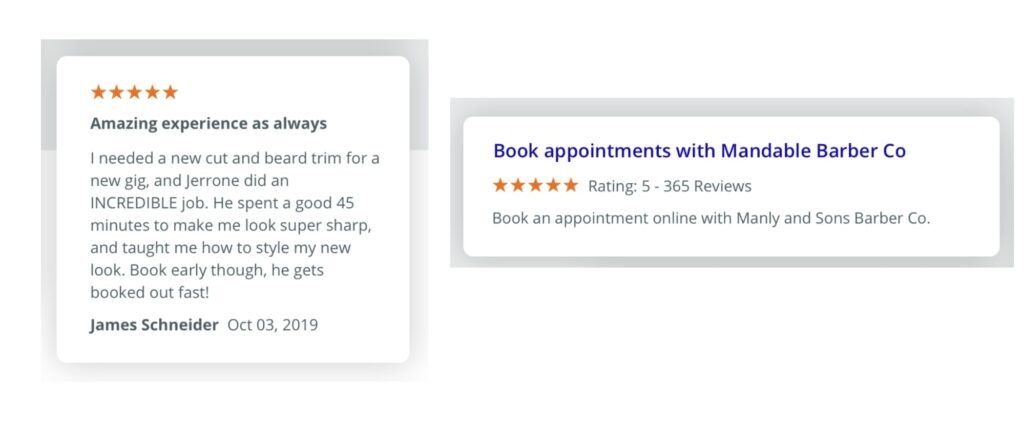
These example banners are a part of Booksy's app. It automatically integrates with your Google business page to retrieve reviews, making it easier to manage the reviews you’d like to display.
Social media is another worthy place for sharing reviews. Pick the most impressive ones and make a post, you deserve some recognition for them!
Just like Genbook does in this Facebook post.
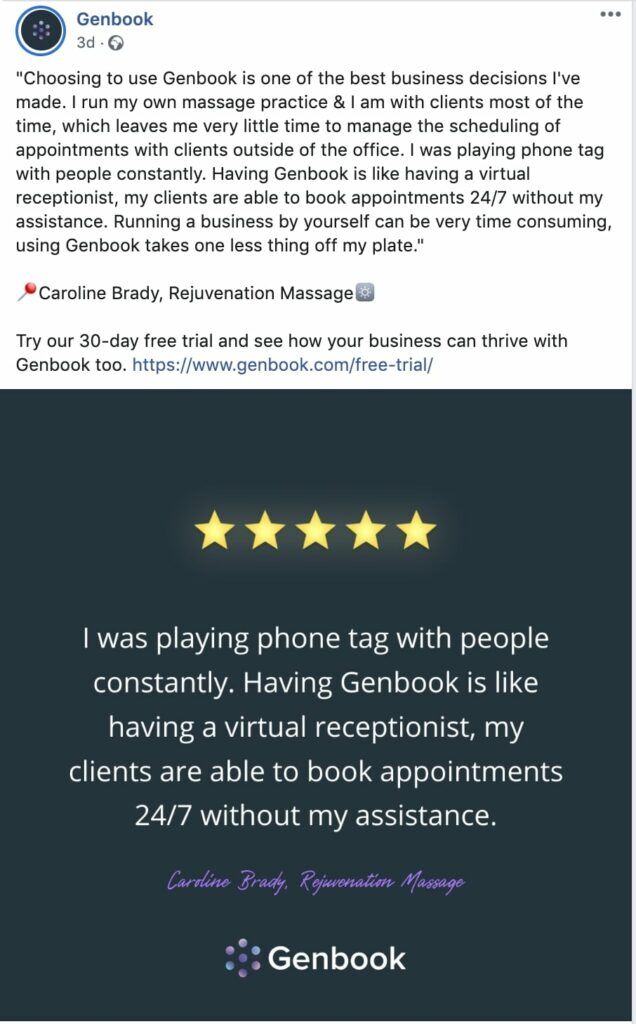
Note that the post also included some marketing, too (the link to the free trial page). This is a great technique to increase the confidence of potential clients to connect with you.
Sharing posts like this once in a while can do great things for your reputation. So, make this technique a regular part of your online review management process.
Set up Google Alerts to receive notifications when someone mentions your brand anywhere on the web. It’s a free and great service that sends an email when someone mentions a word of your choice, say, your brand’s name, on social media, in a blog post or other online resources.
Setting up an alert is super easy. Basically, you need to provide your business name, choose how often you want the notification to be delivered, and click “Create Alert.”
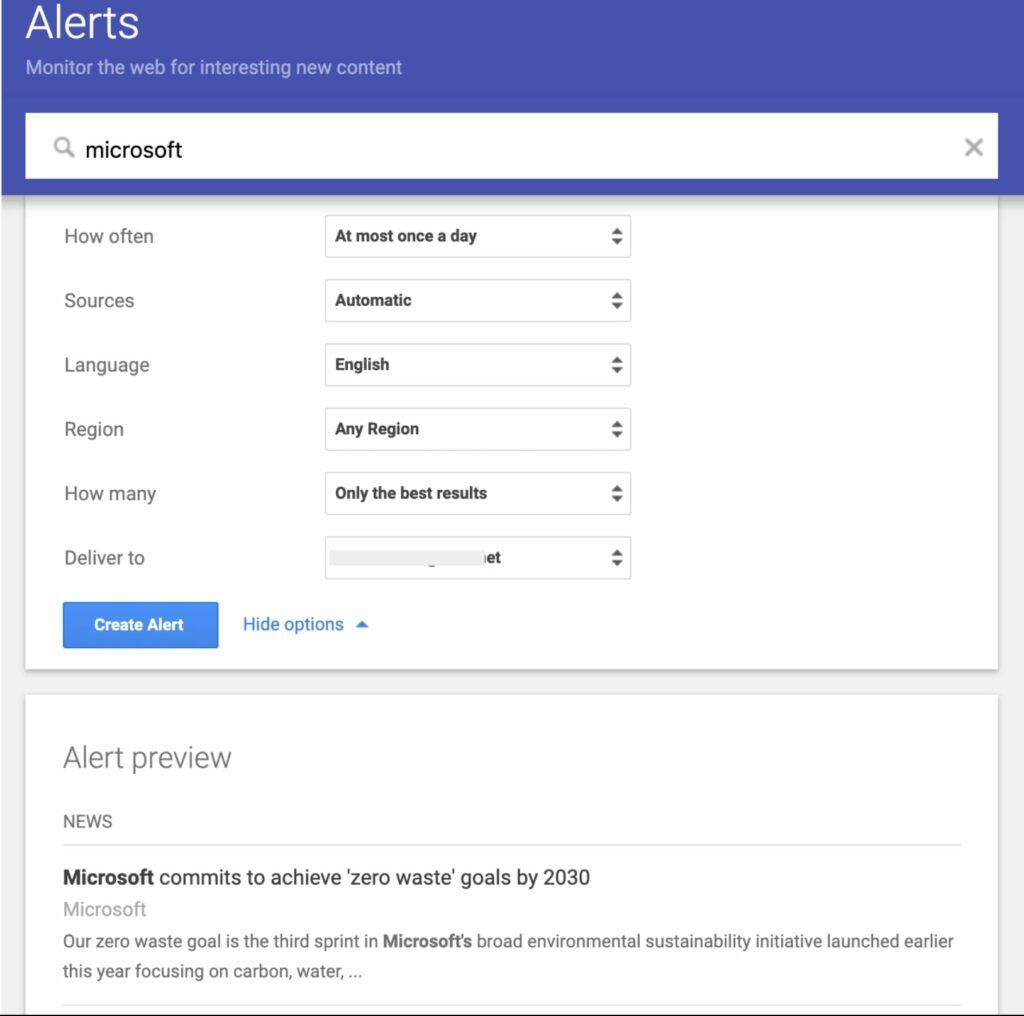
Check your email regularly to see the mentions that Google finds. This service will help to react to potential issues quickly or learn about positive mentions you can share with your clients.
Local businesses are heavily affected by the ongoing COVID-19 pandemic, but it doesn’t mean they shouldn’t remain laser-focused on their review management and crisis communication. A lack of updates from your business, for example, can lead to negative reviews.
Here are many basic things you need to do to maintain and strengthen your reputation during this uncertain time.
Google My Business profiles now have this message warning clients about potential changes due to the pandemic.

To help avoid misunderstandings and confusion (which potentially may lead to negative reviews), your business profiles should include updated information on working hours. This includes your booking pages, website, Google My Business listing, local business directories, and social media accounts.
To inform your clients about your updated hours, and other information, you can display a special website message. One way to do so is with a free chatbot like this one.
It appears on the homepage and sits in the bottom right corner, so it doesn’t disrupt the browsing experience like a pop-up window.

This message is displayed to all visitors, so you’ll be able to update every client on any COVID-related change.
Needless to say, there’s a lot of uncertainty right now. To stay connected with your clients and update them on everything related to your business, post regular updates on your social media pages.
Local businesses like barbershops are among the most active, updating their clients via Facebook on their availability. Here’s a typical post announcing the re-opening, from Trachouse, another Booksy user on Instagram.
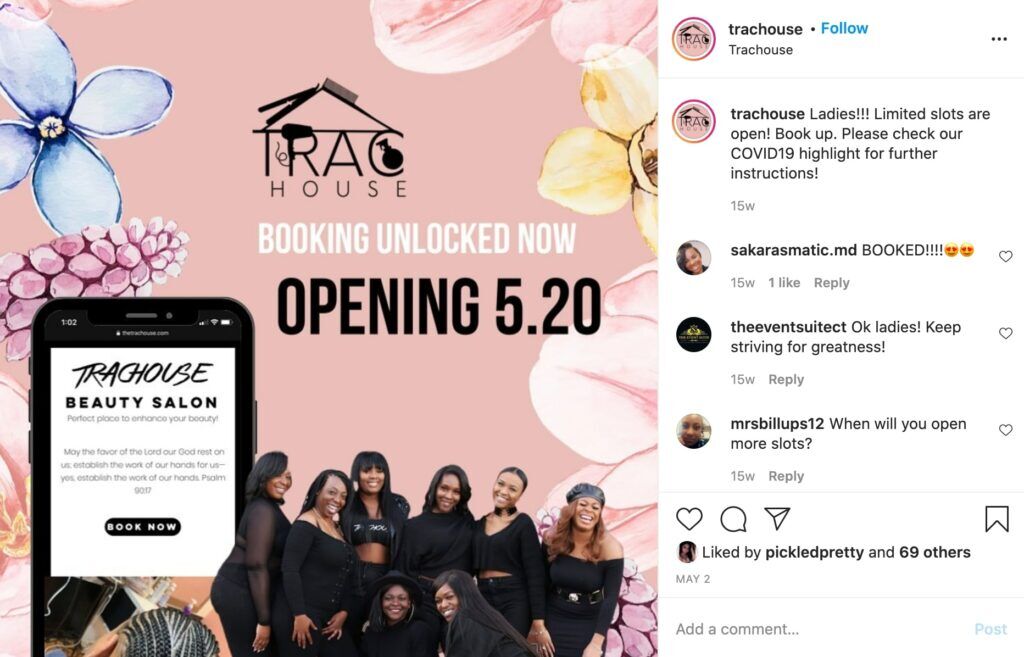
What should you post?
Updated working hours, COVID-19 safety measures, helpful resources, local health authority recommendations – really anything related to the situation and how it affects your client experience.
Pro-tip: Engage in social media conversations, community conversations and forums.
Posting information without really engaging through comment replies or engagements is one-way communication. That’s why you should try responding to comments under posts you publish.
Now you know how to do things differently and better when it comes to managing your online reviews and reputation. Hopefully, you found this online review management checklist useful to start improving your local business’s reputation.
And if you’re looking for a technology partner that not only helps you manage your online appointments but also offers inbuilt reputation management toolkit, then try Booksy free for 30 days.
Editor’s Note:This post is written by Kas Szatylowicz. Kas is a Content Manager at Tidio Live Chat. She writes about all things SEO, content marketing, and social media.

